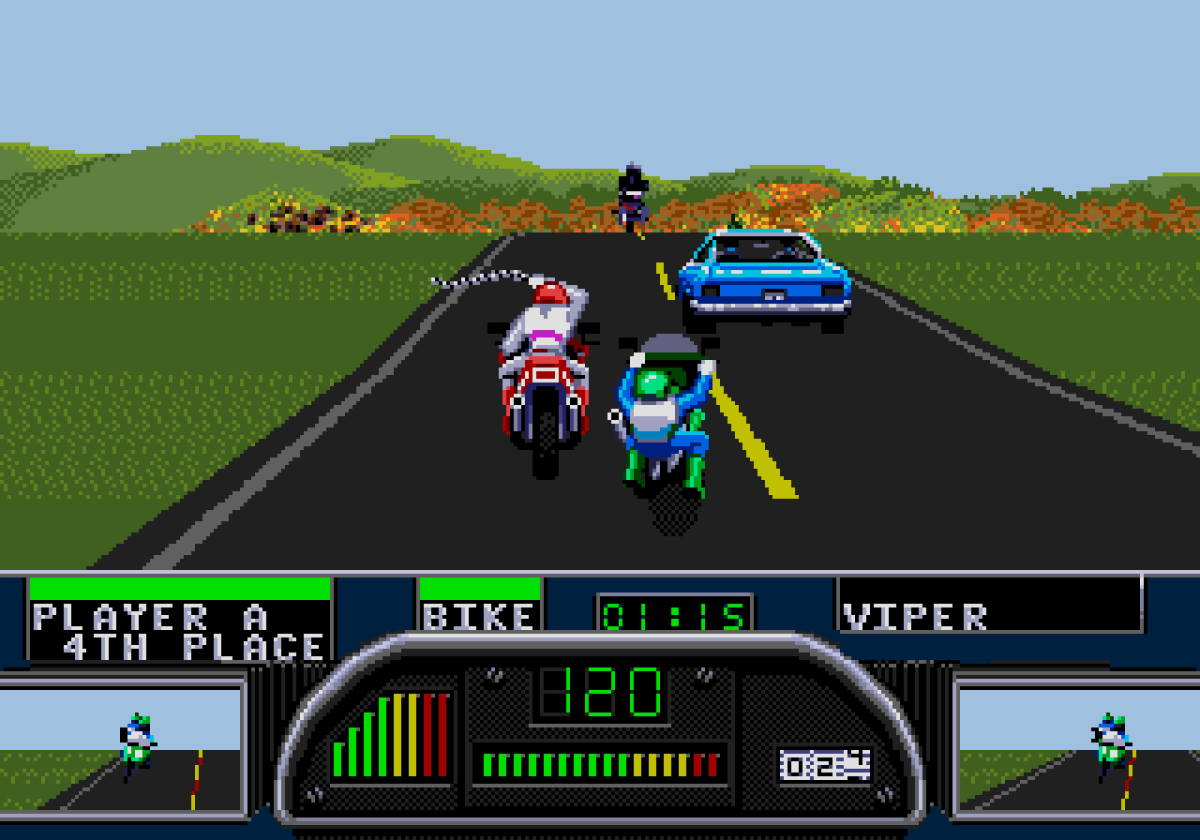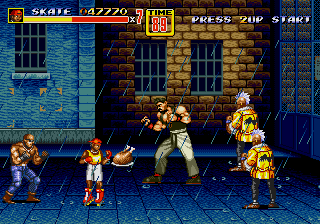Experience Points – Memories of a Lifelong Gamer is a series of blog posts that I’ve undertaken to record some of my fondest memories of nearly 40 years of gaming.
The Genesis Arrives… Quietly
In my world, the 16-bit generation arrived very quietly with little fanfare. In 1989 the Sega Genesis (Megadrive) and the NEC Turbo Grafx 16 were released in the United States and neither myself or any of my friends seemed to notice. We kept on happily playing our NES games, and in my case even Atari 2600 games. Even Super Mario 3 was two years away, so that gives a pretty good context for the state of gaming in the US at the time.
How could we not be aware that two new video game systems had been released? Doesn’t that sound bizarre? After all, today if a new gaming console even gets mentioned, every gamer on earth knows about it within 24 hours. Well, think about where we are in time.
In 1989 there was no internet, or at least not much of one to speak of, let alone affordable computers that could connect to it. Gamepro and Electronic Gaming Monthly were brand new, not in high publication and relatively unknown to the average gamer. Nintendo Power was really the only gaming magazine we knew about, and the only thing it ever mentioned was a Super Nintendo that was years away, and they sure weren’t going to highlight new competition.
If something wasn’t advertised on TV, or even on channels that I got to see regularly, there was very little chance for us to learn about it. These were very different times, where we weren’t inundated with every little scrap of gaming news. There were no dev blogs, Twitch streams, youtube channels, kickstarters, Twitter updates, Facebook pages, websites devoted to games or gaming news. We were largely just surprised when we saw something show up in arcades or stores.
When I think about it, there aspects of this that I think I prefer to today.
In 1991, War Was Beginning*
Sega set up Nintendo the bomb*.
In 1991, Nintendo released the Super NES in the US. “Now you’re playing with SUPER Power!” But they had a very big problem. Sega had done a masterful job marketing the Genesis in the previous two years, including dropping the price, developing games specifically for the US market, a giant marketing campaign and bundling it with one of the all time classics, Sonic the Hedgehog. The 1991 Christmas season was huge for the Genesis and for the first time ever, Sega had the highest market share in a current generation system. Nintendo had been dethroned.
And NOW we finally got signal*. We turned the main screen on*, and the Genesis was all over TV with a barrage of commercials. Sonic was now being talked about as much as Mario and many of the more well-to-do families had a Sega. We heard terms like “Blast Processing” and suddenly the Genesis was the “cool” system to have.

My friends and I were in our teens now. In 1992 I was 13 and finishing my 7th grade year while James and Jeff were in high school. At this point in our lives, “cool” was appealing. So were girls, but that’s another story. For us, “cool” was Pearl Jam, U2 (Achtung Baby was their hot new album), Red Hot Chili Peppers and Eric Clapton. “Cool” was Bloodsport and Kickboxer (released a few years earlier), Terminator 2, Predator 2, and Batman Returns. And the Genesis was certainly cool, and the marketing certainly promoted that perception.
The commercials were edgy, more mature and weren’t afraid to take shots at their rival Nintendo, even calling them out by name with their successful “Genesis Does what Nintendon’t” marketing campaign. Later their commercials would feature the famous “SEGA!” scream at the end of each one, which wove itself into popular culture.
Perhaps the commercial that I remember most of all is not for the Genesis, but for the Gamegear, which ironically none of us ever owned.
With marketing this successful, it is no wonder that for years, all of Nintendo’s 16-bit base belonged to Sega*. I suppose it was inevitable that at some point, one of us would own a Genesis. In Christmas of 1992, it was Jeff.
(*) I tried to work in as many references to the bad English translation of the Sega Genesis game, Zero Wing, as I could. The asterisks denote each one.
Finally Playing the Genesis
Jeff’s Sega Genesis would come to be a centerpiece for our video gaming adventures for a couple years. While we still played the occasional season of Tecmo Super Bowl on the NES, the Genesis still got most of our game time.
While we enjoyed Sonic, we were also enjoying other titles like Altered Beast, Golden Axe 2, and Road Rash 2. These games were certainly more mature and edgy, particularly Road Rash 2. You didn’t see games like this on the NES. After all, you go to run in illegal motorcycle races, beat up the other riders and even chase or beat down cops!

The vibrant graphics, driving music, edgy content and overall fun of these games had us hooked. But I have yet to mention our favorites.
Taking to the Streets
One of our immediate favorites was Streets of Rage 2. We hadn’t even played Streets of Rage 1 and really didn’t care. SoR2 was perhaps the most classic, quintessential 2D “beat-em-up” in the entire genre. Even its predecessor was not the first, as this style had existed for years with notable examples like Double Dragon and and Capcom’s legendary Final Fight (which I didn’t know about yet).

SoR2 perfected everything about the genre. You can’t get any more late 80s/early 90s in style than SoR2. It’s like it was right out of a contemporary action film, with bright, neon lights in seedy corners of the city. Gang members with spiked hair, riding motorcycles and playing arcade games. The levels were full of details that made you feel like you were right there in the heart of the city, cleaning the streets of bad guys.
The soundtrack composed by Yuzo Koshiro, in my opinion, is an absolute masterpiece. It’s one of those rare moments in 8 or 16-bit gaming where the soundtrack of a game was so exceptional that it set standards. The description of the style on Wikipedia does it more justice than I can:
“The soundtrack was influenced by electronic dance music, specifically house, techno, hardcore techno, and breakbeat. The soundtrack for Streets of Rage 2 is considered “revolutionary” and ahead of its time, for its “blend of swaggering house synths,” “dirty” electro-funk and “trancey electronic textures that would feel as comfortable in a nightclub as a video game.”
Jeff, James and I would take turns with two-player and we eventually got very good at it. We beat it on the hardest difficulty and even unlocked the secret “Mania” difficulty, nearly impossible on single player but that on a good day, we could beat on two player. No matter what new games came out, we were always up for a round of Streets of Rage 2 every now and then.
But this was not the only game that would have a lasting impact on me. There was another, that started a near obsession for all of us.
We Discover the RPG
Jeff, James and I were all a bit familiar with the swords and sorcery fantasy setting, mostly through movies like Conan the Barbarian, Red Sonja (I LOVED that movie as a kid) and Beastmaster, as well as video games like Golden Axe and Wizards and Warriors. Even the Legend of Zelda fit that role for us. But we had never played Dungeons and Dragons and had not yet gotten into reading fantasy novels. The NES had Final Fantasy and some Dragon Quest (Warrior) games, but for some reason we just never got into them.
So when Jeff picked up Shining Force, it wasn’t out of some prior fascination with RPGs. It just looked like another really cool Sega Genesis game. And boy was he ever right. I’ll put it to you this way:
This website exists because of Shining Force.
-8.jpg)
Shining Force introduced all three of us to the traditional RPG character, with hit points, magic points and other stats, to experience points and leveling up, character classes and promoting to new classes. This was all new to us but we all found it incredibly fun and addictive. It literally put RPGs (both video game and tabletop) on the map for us.
At this point it is tempting to keep writing about Shining Force and its influence, but I feel that it’s worth its own Side Quest entry.
To put it simply, the Genesis kept us very entertained for years to come. The side-scrolling, gritty swords and sorcery Blades of Vengeance, the merciless Hellfire, the legendary NHL ’94, where you could get into fights with your opponent, more Sonic games, Revenge of Shinobi, Mortal Kombat and many others, were regulars for us.
But sooner or later, the SNES would have to come to our attention, and one of us would have it. And this time, for the FIRST time, it was me.

I can relate to this on a few levels. Hanging out at my friend David’s for weeks on end. Playing games, riding bikes, etc… We put countless hours into Road Rash 2
good article